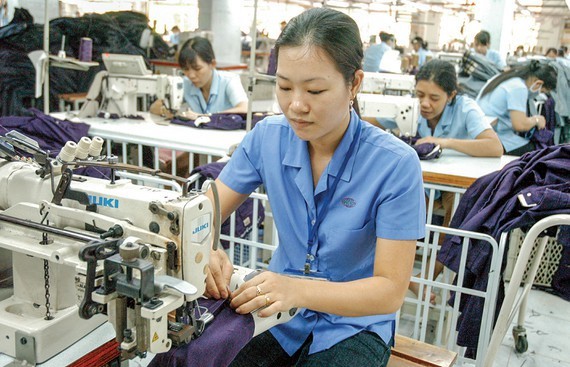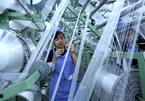 |
|
Garment and textile is one of the most advantageous industries when the EVFTA comes into effect.
|
Many experts considered EVFTA as one of the advances that Vietnam has gained during the process to negotiate free trade agreements because of comprehensiveness and market openness.
Ms. Nguyen Thao Hien, deputy head of the European-American Market Department, said that after the EVFTA becomes effective, 85.6 percent of tariff lines will be removed, accounting for 70.3 percent of Vietnam’s export turnover to the EU.
After seven years of the EVFTA, 99.2 percent of tariff lines will be eliminated, accounting for 99.7 percent of export turnover and 0.8 percent of the remaining tariff lines will be applied tariff rate quota with tariff rate in the quota at zero percent.
Import tariff reduction by the EU will bring many opportunities for agricultural products, such as rice and rice products.
Particularly, the EU will allocate a quota of 80,000 tons of rice per year with polished rice, unpolished rice and fragrant rice with within-quota tariff of zero percent. As for broken rice, import tariffs will be removed within 5 years for broken rice and within 3-5 years for rice products.
Import tariffs of fresh and processed vegetables and fruits, fruit juice and fresh flowers will be immediately eliminated. Coffee, black pepper, cashew nut and honey will receive immediate tariff elimination.
As for industrial products, garment and textile will have 42.5 percent of tariffs lines eliminated immediately and the rest will be reduced to zero percent after 3-7 years; leather and footwear 37 percent of tariffs lines eliminated immediately and to zero percent after 3-7 years; wood and wooden products 83 percent of tariffs lines eliminated immediately and to zero percent after 5 years; computers, electronic products and components 74 percent of tariffs lines eliminated immediately and to zero percent after 3-5 years; plastic products, cell phones and components, bags, steel products and basic glass products will be eliminated import tariffs immediately.
Aquatic and seafood products will have 50 percent of tariffs lines removed when the EVFTA takes effect; the rest 50 percent of tariff lines will return to zero percent after 3-7 years. Currently, the EU is applying tariff rate quota of 11,500 tons per year for canned tuna and 500 tons per year for fish balls.
Tariff reduction creates competitive edge for Vietnamese products but it also means that Vietnamese enterprises will have to face more challenges of protectionism via high technical barriers for import products in the EU market.
According to the Industry Agency, footwear and garment and textile are the most advantageous industries when the EVFTA comes into effect because of high tax reduction and not-too-strict rules of origin.
However, the similarity of these two fields is that they are mostly processing, so in order to take advantage of preferential tariffs of the EVFTA, garment and textile and footwear enterprises need to move to intensive, chain development stage from developing materials, designs to finishing products so as to ensure rules of origin in accordance with regulations of the EVFTA.
For most of export products to the EU, besides meeting regulations on quality and food safety, they need to meet standards and administrative procedures regulated by the EU, take social responsibility seriously and ensure transparency about labor and production environment.
Dr. Vo Tri Thanh, former deputy head of the Central Institute for Economic Management, said that the signing of several comprehensive and new generation agreements, such as CPTPP and EVFTA, showed that Vietnam is facing many opportunities to attract important investors in the world. In other words, Vietnam still has plenty of room for doing business. SGGP
Thanh Nha

VN garment, textile export falls short of target but surplus impressive
Vietnam’s garment and textile exports were estimated at US$39 billion this year, slightly falling short of the US$40 billion target.

Vietnam's export of timber and wood products exceeds US$9 billion
The export of timber and wood products has exceeded the US$9 billion mark for the first time during the first 11 months of the year, according statistics released by the General Department of Vietnam Customs.
 The EU-Vietnam Free Trade Agreement (EVFTA) and the EU-Vietnam Investment Protection Agreement (EVIPA) open many opportunities to promote trade and investment between Vietnam and the European Union.
The EU-Vietnam Free Trade Agreement (EVFTA) and the EU-Vietnam Investment Protection Agreement (EVIPA) open many opportunities to promote trade and investment between Vietnam and the European Union.